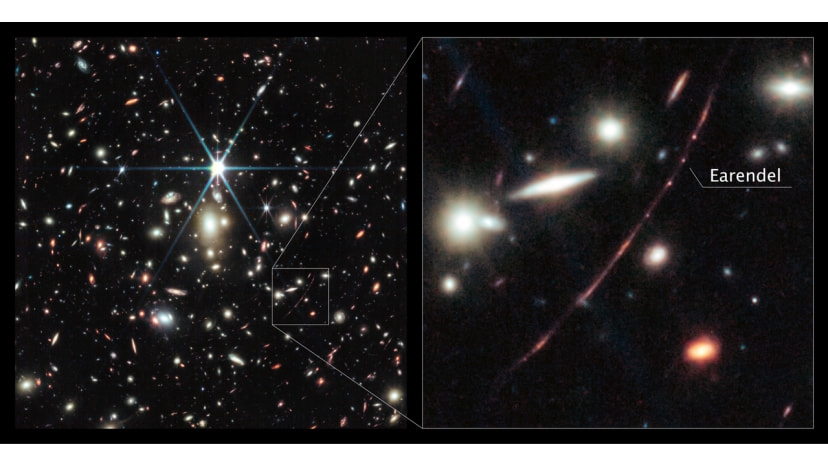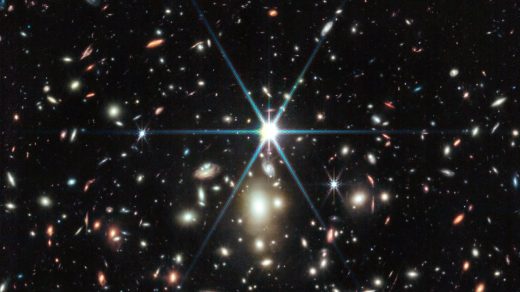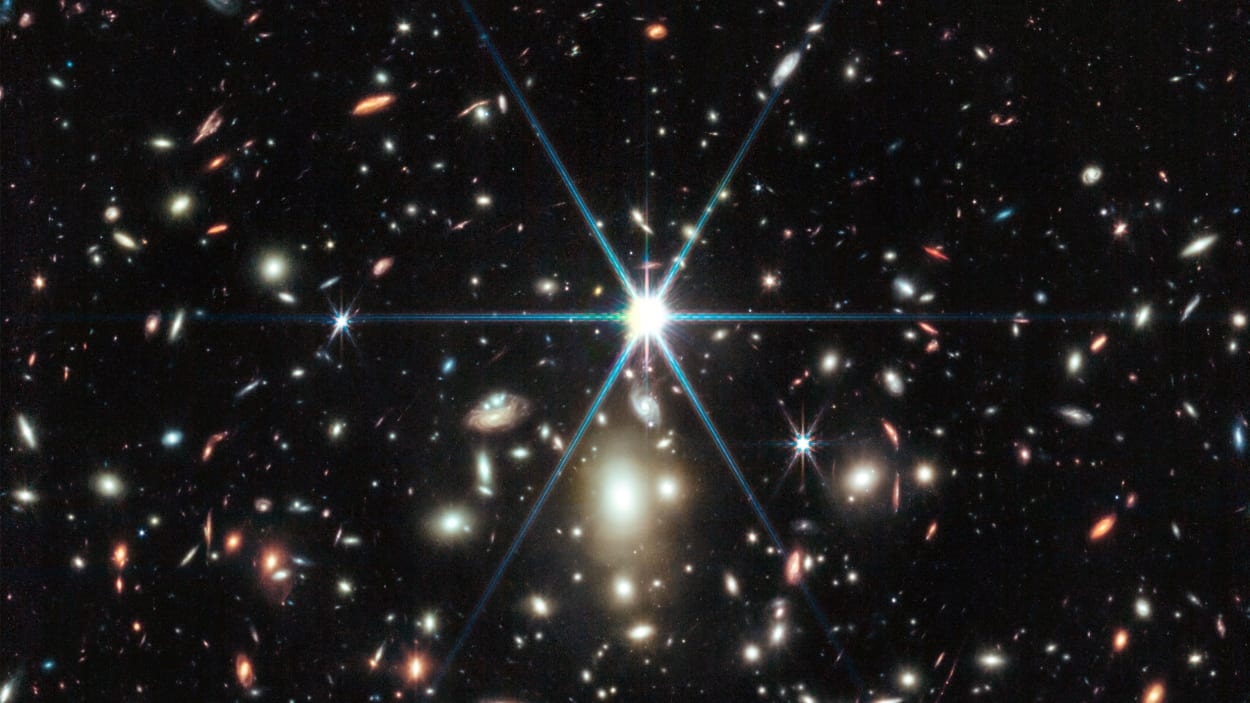Earendel is the most distant individual star we’ve ever detected
By Swapna Krishna
The James Webb Space Telescope (JWST) imaged the farthest individual star we’ve ever seen, and scientists were able to detect the star’s color, brightness, and temperature. Called Earendel, this individual star is around 12.9 billion years away and formed just a billion years after the Big Bang. It was first spotted by Hubble in 2022.
Earendel is a massive B-type star located in a galaxy called the Sunrise Arc. It’s a blue star about a million times brighter than our Sun, 50 times more massive, and burns twice as hot.
With observatories like JWST and Hubble, it’s relatively easy to see distant galaxies—but spotting an individual star is much more difficult. At this distance, even giant galaxies look like smudges. It’s almost impossible to resolve individual stars within them, yet scientists were able to look specifically at Earendel thanks to a phenomenon called gravitational lensing.
Gravitational lensing occurs when a massive object—such as a galaxy cluster—actually warps the fabric of space and acts as a magnifier for more distant objects beyond it. In this case, the galaxy cluster WHL0137-08 sits in between Earendel and Earth. This cluster amplifies the light of Earendel more than a thousand times, which is how scientists were able to distinguish it from the objects around it. The line through the star in this annotated image is the “wrinkle” created by gravitational lensing; it magnifies other objects around Earendel as well.

One interesting feature of early stars in our universe is that they may not be composed of the same elements as more current stars. Because stars, and violent stellar deaths such as supernovae, produce the heavier elements in our universe, one theory of star formation posits that early stars in our universe didn’t have these elements.
According to this theory, they were called Population III stars, were mainly composed of hydrogen and helium, and were much more massive and brighter than our Sun. After these stars burned out, Population II stars formed with some heavy elements, which finally led to the current crop of Population I stars. Scientists may have already detected these Population III stars with JWST, but confirmation is still forthcoming, and studying Earendel will give scientists insight on how early stars in our universe formed and what their composition might have been.
(18)



